Is a range hood required by code?
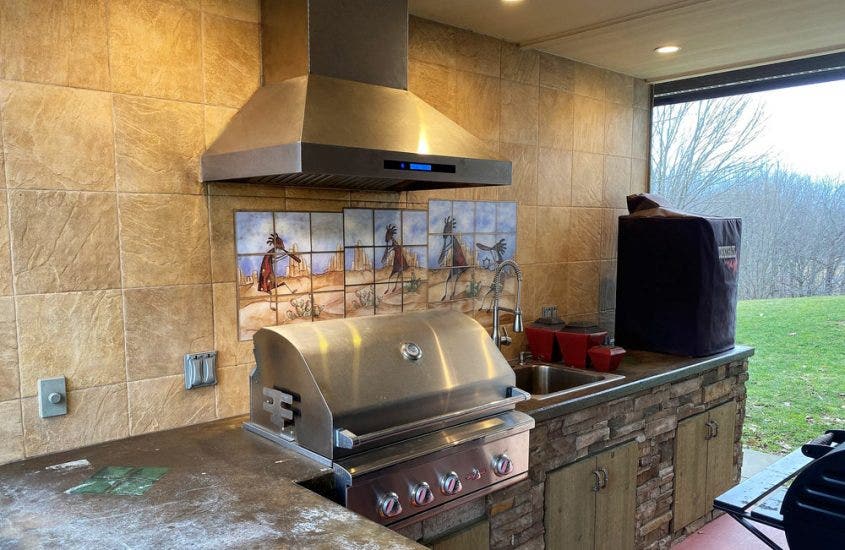
Range hoods serve many different purposes. Homeowners use them to vent grease and smoke from their kitchens; factories and warehouses use them to vent chemicals and potentially hazardous materials from workspaces or storage areas; restaurants use them to vent heavy grease and smoke out of commercial kitchens. These are just a few examples of their many functions.
The International Code Council determines the rules and regulations for range hoods. As of 2018, they publish revised manuals every three years with updated ventilation requirements for commercial and residential areas.
Beyond the International Code requirements, your local area may have its own codes with specific regulations. Contact your local authorities to discuss these requirements.
The 2018 International Mechanical Code has this to say about range hood requirements:
“An exhaust system shall be provided, maintained, and operated as specifically required by this section and for all occupied areas where machines, vats, tanks, furnaces, forges, salamanders and other appliances, equipment and processes in such areas produce or throw off dust or particles sufficiently light to float in the air, or emit heat, odors, fumes, spray, gas or smoke in such quantities so as to be irritating or injurious to health or safety.”
In other words, in all places where fumes are produced at levels that are risky to your health, an exhaust system is required. These areas include but are not limited to equipment rooms in factories, dry cleaning rooms, commercial kitchens, fuel dispensing areas, especially for aircraft, and many more.
In the International Code manual, residential vent hoods are not specifically required. However, if you purchase a vent hood for your home, it must abide by specific requirements outlined here. These include compliance with Underwriters Laboratories’ safety standards, the ductwork material, use of a damper, make up air, and more.
The code requires make up air for vent hoods over 400 CFM, but this will largely depend on your cooking style and the size of your kitchen. If you turn your vent hood on a high CFM for long periods of time – or if you have a small kitchen – you should definitely consider a make up air system.
In restaurants, vent hoods are required. This is what the ICC Mechanical Code says:
“Type I hoods shall be installed where cooking appliances produce grease or smoke as a result of the cooking process.”
Commercial vent hoods require make up air and a fire suppression system to ensure their safe use.
Beyond these requirements, the type of filters, gutters or trays, vent hood material, duct-to-hood joints, duct openings, and much more are outlined in the code regulations.
Table of Contents
What’s the difference between a Type I and a Type II vent hood?
Type I vent hoods are built for grease and smoke-producing appliances, whereas Type II hoods vent heat, moisture, or vapor outside of the room – not grease or smoke. A range hood over your stainless steel grill, gas stove, or in a restaurant kitchen is a Type I hood. A hood over a commercial dishwasher is a Type II hood. Unless otherwise stated, residential and commercial range hoods are Type I.
Is a range hood required for an electric stove?
A range hood is required for an electric stove if the stove produces less than 5 micrograms of grease when tested at 500 CFM. This specific requirement is more relevant for electric stoves in commercial kitchens. You won’t really be able to test this in your own kitchen. So, we recommend installing a Type I fan over your electric stove to ensure all the unwanted contaminants are vented out of your kitchen. This will keep the air clean and fresh.
On average, electric stoves produce less heat, grease, and smoke than gas stoves. So, you won’t need a range hood that moves as many CFM (cubic feet per minute) as a gas stove.
What codes are there for range hoods?
Codes are put in place to ensure that potentially harmful contaminants stay out of your home and that everyone remains in good health. They outline 1) if a range hood is required in your kitchen or environment and 2) its specific requirements (CFM, material, type of filters, etc.). If an appliance produces too many contaminants in a given area, a range hood may be required, depending on your area’s building codes.
What can I use if I don’t have a range hood?
If you don’t have a range hood, a microwave vent hood is your next best option. But these are much less powerful than vent hoods, so we don’t recommend them. You can purchase a professional quality vent hood that will last you for many years by clicking on the banner below.
Is a range hood required by code in Ontario?
Commercial range hoods are required in Ontario, along with fire suppression systems. For all range hoods, the ductwork must be an independent system, be made of durable corrosion-resistant material, and properly supported to maximize durability. The range hood must include grease filters.
Residential range hoods are not required for single-story homes. For multi-story homes or large residential areas, you must consult with an architect to determine if ventilation is required.
Review the full Ontario ventilation codes at this link.
Is a range hood required by code in Virginia?
Virginia abides by the requirements outlined in the IMC, which requires range hoods for commercial environments. They are not required in residential areas, but ductwork must be made of stainless steel, copper, aluminum, or galvanized stainless steel.
To view the full list of requirements, click here.
Is a range hood required by code in Texas?
Texas also abides by the IMC, so a range hood is required in a commercial environment. In addition, air cannot be “into an attic, soffit, ridge vent, or crawl space.” It must vent to the outside. However, ductless models are permitted as an exception to this rule.
Kitchens must be vented with a minimum of 25 CFM of continuous air or 100 CFM intermittent air. This is so little CFM that you don’t need a range hood to reach this threshold. In fact, residential exhaust fans can reach up to 2000 CFM.
Check out Texas’ full ventilation requirements here.
Is a range hood required by code in Florida?
The Florida requirements are the same as Texas, which requires ducted range hoods in commercial environments. Ductless range hoods are permitted in residential areas, where at least 25 cubic feet per minute of air is required.
Read more about Florida’s code requirements here.
Is a range hood required by code in California?
In California, vent hoods are required that produce 100 cfm or more intermittently or produce 5 air exchanges in one hour.
This is required in all residential areas, remodeled homes, or areas that are 1000 square feet or larger.
Check out the full report here.
Is a range hood required by code in Massachusetts?
Massachusetts also requires a range hood that produces at least 100 intermittent CFM or 25 CFM continuously. Again, you can achieve that power without a vent hood – the important part is that your space is adequately ventilated.
In Massachusetts, Texas, Florida, and Virginia, your hood must be mounted at least 24” away from the cooktop. We recommend mounting it between 28 and 36 inches away for maximum efficiency.
For more details, take a look at this document.
Is a range hood required by code in New York?
New York shares many of the same requirements of Massachusetts, California, Florida, and Texas. A range hood must move at least 100 CFM intermittently, or 25 CFM continuously. The code further states:
“Range hoods shall discharge to the outdoors through a duct. The duct serving the hood shall have a smooth interior surface, shall be airtight, shall be equipped with a back-draft damper, and shall be independent of all other exhaust systems. Ducts serving range hoods shall not terminate in an attic or crawl space or areas inside the building.”
One exception to this rule is ductless range hoods.
To view the full document, click here.
Recap
Many states have similar ventilation requirements. The most important things to keep in mind are the mounting height and to avoid venting into your attic or joists in your ceiling.
Most states don’t require a stove top hood specifically, but they want to ensure that your home is adequately ventilated with some type of fan.
Commercial vent hoods, on the other hand, must abide by stricter regulations, following the guidelines laid out by the Underwriters Laboratories and installing safety equipment such as fire suppression systems.
Local code takes precedence over international code since your local area has the freedom to regulate ventilation within their state, whereas the international requirements have to be more standardized.
So, be sure to contact your local authorities and ask about range hoods before you proceed with the installation.
Exhaust fans are becoming increasingly popular because of recent studies suggesting their potential harm. We highly recommend thinking through your cooking habits and behaviors in the kitchen to determine if you need one. Also, consider the size of your kitchen. The International Mechanical Code calculated CFM based on the square footage of the room.
For more information on CFM, check out our comprehensive article on how to determine the CFM of your range hood.
Even if you don’t do a lot of cooking, we recommend purchasing some type of exhaust system. It will vent all the contaminants rising from your cooking surface and give you peace of mind while cooking. It is incredibly convenient for those with preexisting conditions such as asthma or who have other breathing complications.
We hope that this article on building codes and ventilation was useful. These codes cover gas stove venting, electric stove venting, and everything in between.
We highlighted some of the most important ventilation requirements for a few states as well as internationally, but this article is not exhaustive. For complete details, please refer to the comprehensive reports linked in the article.
Thanks for reading!
Related Articles
How many CFM do I need for my range hood?
Best Ductless Hoods (Hoods for Your Apartment)
Is a range hood required by code?
In the International Code manual, residential vent hoods are not specifically required. However, if you purchase a vent hood for your home, it must abide by specific requirements outlined here. These include compliance with Underwriters Laboratories’ safety standards, the ductwork material, use of a damper, make up air, and more.
What’s the difference between a Type I and a Type II vent hood?
Type I vent hoods are built for grease and smoke-producing appliances, whereas Type II hoods vent heat, moisture, or vapor outside of the room – not grease or smoke. A range hood over your stainless steel grill, gas stove, or in a restaurant kitchen is a Type I hood. A hood over a commercial dishwasher is a Type II hood. Unless otherwise stated, residential and commercial range hoods are Type I.
Is a range hood required for an electric stove?
A range hood is required for an electric stove if the stove produces less than 5 micrograms of grease when tested at 500 CFM. This specific requirement is more relevant for electric stoves in commercial kitchens. You won’t really be able to test this in your own kitchen. So, we recommend installing a Type I fan over your electric stove to ensure all the unwanted contaminants are vented out of your kitchen. This will keep the air clean and fresh.
What codes are there for range hoods?
Codes are put in place to ensure that potentially harmful contaminants stay out of your home and that everyone remains in good health. They outline 1) if a range hood is required in your kitchen or environment and 2) its specific requirements (CFM, material, type of filters, etc.). If an appliance produces too many contaminants in a given area, a range hood may be required, depending on your area’s building codes.
What can I use if I don’t have a range hood?
If you don’t have a range hood, a microwave vent hood is your next best option. But these are much less powerful than vent hoods, so we don’t recommend them. You can purchase a professional quality vent hood that will last you for many years by clicking on the banner below.
Is a range hood required by code in Ontario?
Commercial range hoods are required in Ontario, along with fire suppression systems. For all range hoods, the ductwork must be an independent system, be made of durable corrosion-resistant material, and properly supported to maximize durability. The range hood must include grease filters.
Residential range hoods are not required for single-story homes. For multi-story homes or large residential areas, you must consult with an architect to determine if ventilation is required.
Review the full Ontario ventilation codes at this link.
Is a range hood required by code in Virginia?
Virginia abides by the requirements outlined in the IMC, which requires range hoods for commercial environments. They are not required in residential areas, but ductwork must be made of stainless steel, copper, aluminum, or galvanized stainless steel.
To view the full list of requirements, click here.
Is a range hood required by code in Texas?
Texas also abides by the IMC, so a range hood is required in a commercial environment. In addition, air cannot be “into an attic, soffit, ridge vent, or crawl space.” It must vent to the outside. However, ductless models are permitted as an exception to this rule.
Kitchens must be vented with a minimum of 25 CFM of continuous air or 100 CFM intermittent air. This is so little CFM that you don’t need a range hood to reach this threshold. In fact, residential exhaust fans can reach up to 2000 CFM.
Check out Texas’ full ventilation requirements here.
Is a range hood required by code in Florida?
The Florida requirements are the same as Texas, which requires ducted range hoods in commercial environments. Ductless range hoods are permitted in residential areas, where at least 25 cubic feet per minute of air is required.
Read more about Florida’s code requirements here.
Is a range hood required by code in California?
In California, vent hoods are required that produce 100 cfm or more intermittently or produce 5 air exchanges in one hour.
This is required in all residential areas, remodeled homes, or areas that are 1000 square feet or larger.
Check out the full report here.
Is a range hood required by code in Massachusetts?
New York shares many of the same requirements of Massachusetts, California, Florida, and Texas. A range hood must move at least 100 CFM intermittently, or 25 CFM continuously. The code further states:
“Range hoods shall discharge to the outdoors through a duct. The duct serving the hood shall have a smooth interior surface, shall be airtight, shall be equipped with a back-draft damper, and shall be independent of all other exhaust systems. Ducts serving range hoods shall not terminate in an attic or crawl space or areas inside the building.”
One exception to this rule is ductless range hoods.
To view the full document, click here.
Is a range hood required by code in New York?
New York shares many of the same requirements of Massachusetts, California, Florida, and Texas. A range hood must move at least 100 CFM intermittently, or 25 CFM continuously. The code further states:
“Range hoods shall discharge to the outdoors through a duct. The duct serving the hood shall have a smooth interior surface, shall be airtight, shall be equipped with a back-draft damper, and shall be independent of all other exhaust systems. Ducts serving range hoods shall not terminate in an attic or crawl space or areas inside the building.”
One exception to this rule is ductless range hoods.
To view the full document, click here.



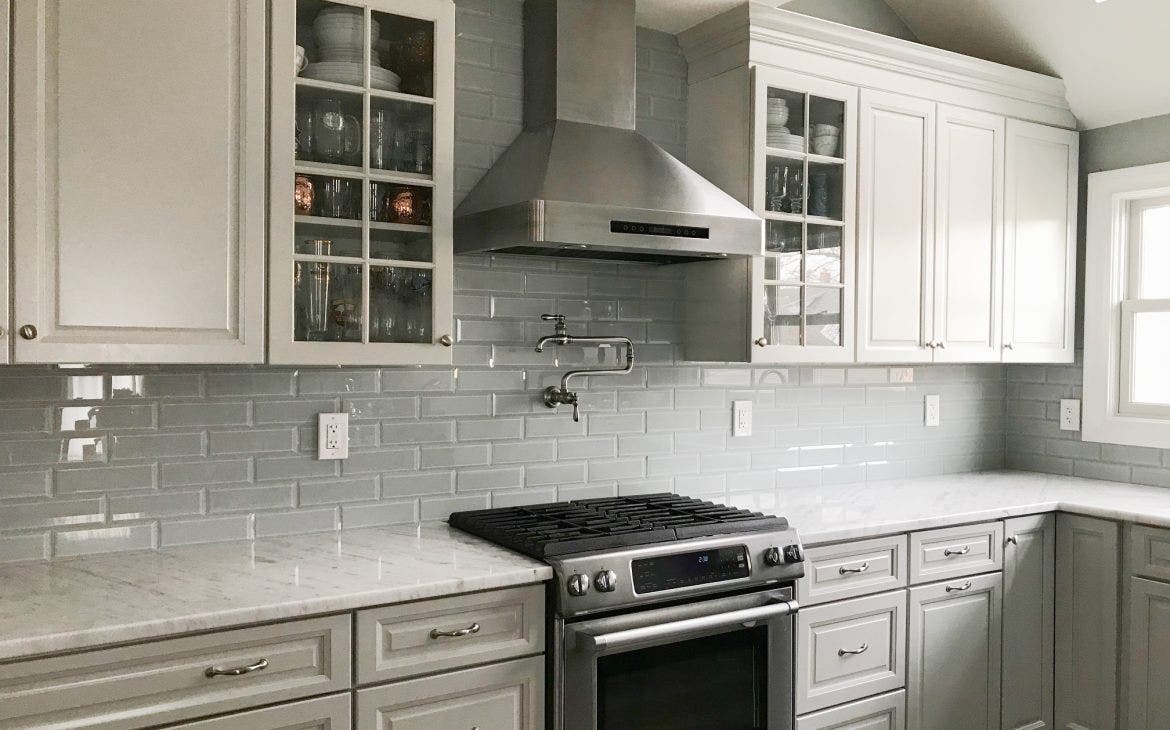
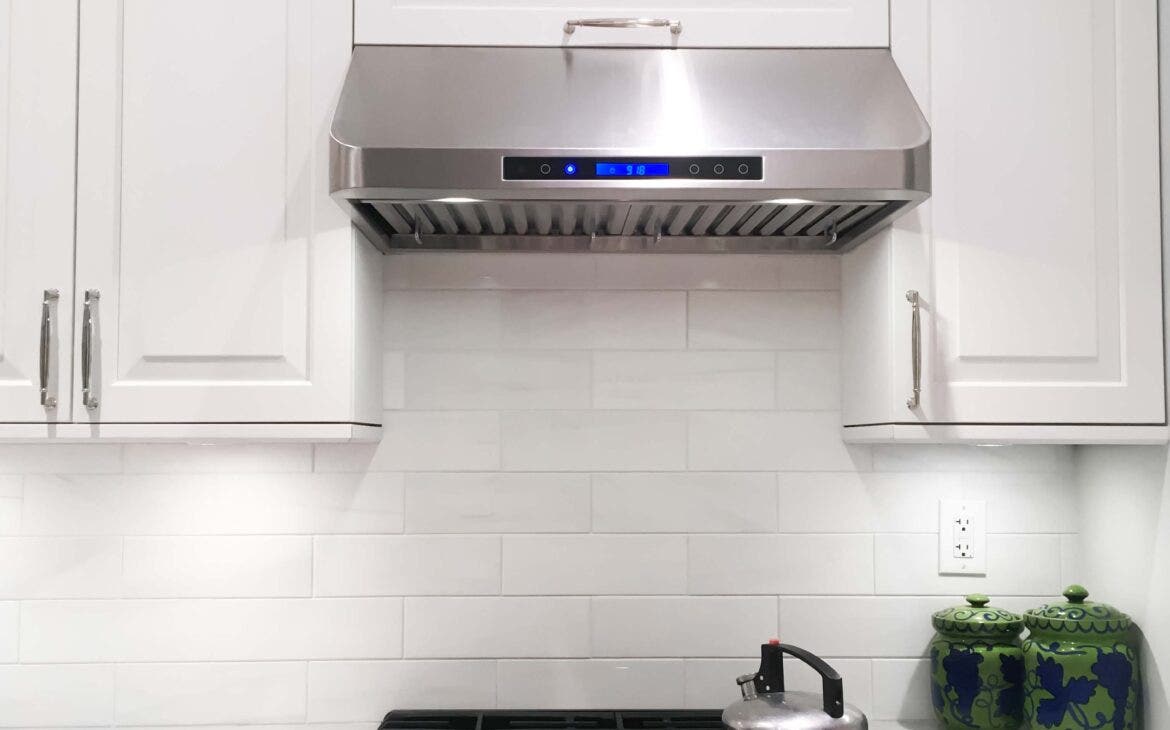

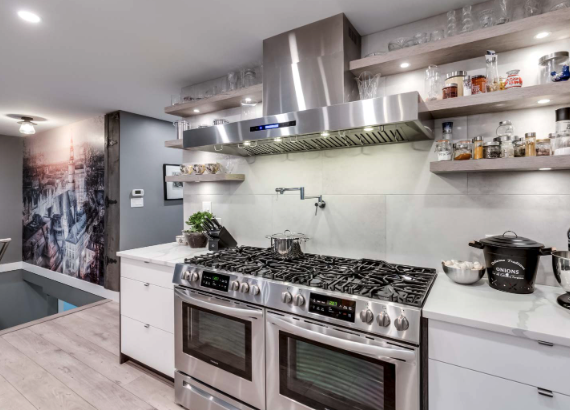
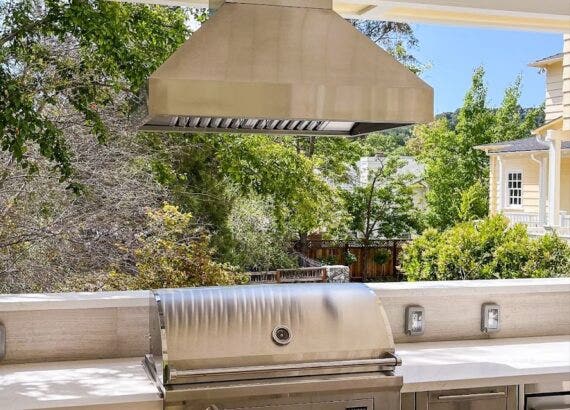
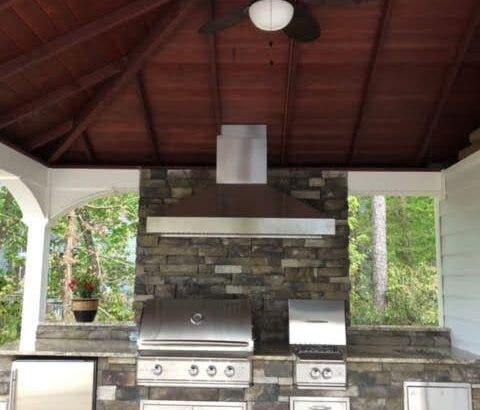
Comments are closed.